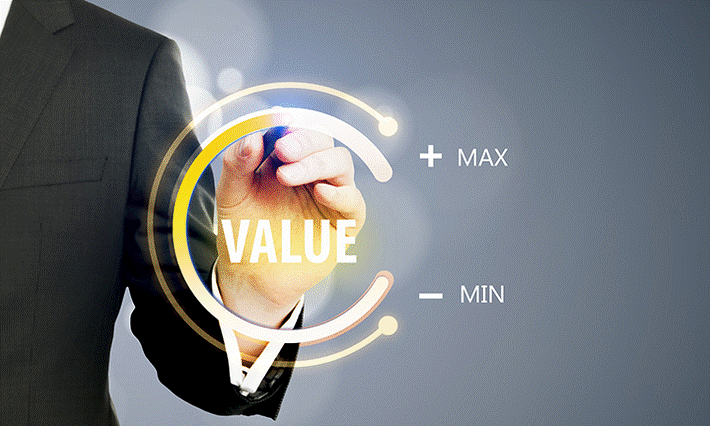
Defining Value in B2B Markets
In the context of B2B, value may be defined as the total benefit of product and associated service translated into economic worth. First, when the word “product” is used, that includes a physical product such as an envelope or a service such as the overnight delivery of that envelope. Both offer the user/customer a desired outcome or collection of benefits. So, a product consists of the core product or service itself and the associated support that enables the user to extract all possible value from it. But in the B2C environment, a consumer needs education and understanding and experience to extract value. We call this the translation process. Those benefits must be translated into terms and concepts that allow the consumer to derive monetary or economic worth.
Figure 1 The total benefit of product and associated service translated into economic worth

Think about the first time you bought liquid detergent for your dishwasher – or if you’re a bit more of an early adopter, the first time you bought the all-in-one packets. After using your previous detergent, it took some getting used to. You had to be convinced that the liquid or packets would work, that it was as good as, or better than, what you had previously used, and that it was worth the price. You probably saw commercials or print advertisements helping you understand how to use the product and convincing you of its merits and efficacy. All of this is the translation process. So value is a package of benefits – product and service – that requires translation into dollar terms.

There are two types of value. Intrinsic value is contained in the object itself. It is based upon the cost of materials, labor and supplies consumed in production. Subjective value, on the other hand, is based upon the usefulness and scarcity of the product. Subjective value depends upon the ability of the product to satisfy the wants of the user. If those benefits cannot be accessed or extracted by the user, there is no value. The difference between the two is as pronounced as the difference between colors of paint placed upon a canvas worth – arguably – the cost of the paints and canvas, and a Seurat painting worth millions of dollars.

Intrinsic value is a starting point, but subjective value drives our economy. Although that distinction may be obvious, think about how many times you have been in a pricing discussion when the bulk of the conversation was about satisfying the user and extracting benefits as opposed to direct costs and acceptable margins.

Understanding value in the business-to-business environment is a substantially different exercise than doing so in the consumer sector. The consumer marketplace is characterized by many, often millions, of individual customers. In contrast, there are relatively few customers in most B2B markets—sometimes as few as 3 or 4, but often numbering in the tens or hundreds. This implies that marketing efforts need to be highly targeted and segments of value may include a handful of companies.

Consumers also have little product knowledge, buying what they think is the bundle of benefits that will satisfy their needs without knowing what is really happening at a chemical, biological or psychological level. B2B buyers have substantial knowledge about the product, how it is manufactured, the source and price of major ingredients or supplies, and even manufacturer costs and margins. From a vendor’s perspective, a B2B customer sometimes knows too much about what they are buying. Advertising and promotion in this context is of limited value, more suited to building awareness. B2B transactions are much more complex involving multiple individuals and functional responsibilities, examining different scenarios of supply and demand, and taking much longer than deciding whether to buy Crest or Colgate. Obviously, B2B transactions are larger in scale, and so small differences in value positions can have major impact on sales and competitive position.
Because of all these factors, B2B supplier relationships are characterized as close and so there are frequent and ongoing occasions to impact value perceptions which are built and reinforced over time. In summary, value in a B2B relationship is complex and marketing efforts to influence and control value must be highly targeted.


